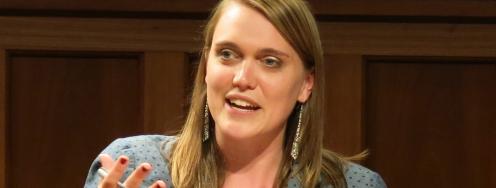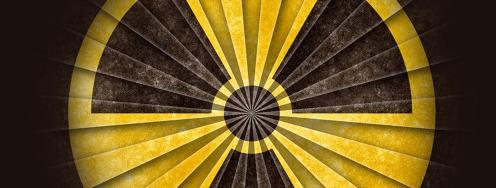Shutting the Door to Nuclear Testing
On the radar: Nuclear test ban; START’s significance; IAEA probe update; Rebuilding the arsenal from scratch; Nixon, Israel and the Bomb; and Nuclear war, done in stained-glass.
On the radar: Nuclear test ban; START’s significance; IAEA probe update; Rebuilding the arsenal from scratch; Nixon, Israel and the Bomb; and Nuclear war, done in stained-glass.
September 15, 2014 | Edited by Jacob Marx and Will Saetren
Banning nuclear tests - “After conducting 1,030 nuclear test explosions, the United States simply doesn’t need or want further nuclear test explosions to maintain its remaining nuclear arsenal. Other states, however, could improve their nuclear capabilities through further testing. For the safety and security of this generation and those to come, it is time to take the actions needed to close and lock the door on nuclear testing,” write Kazakhstan's Ambassador to the U.S. Kairat Umarov, Daryl G. Kimball and Paul F. Walker in The Hill. Last week marked the 18th anniversary of the CTBT’s adoption by the UN General Assembly.
--“We hope the Barack Obama administration will reiterate the case for the treaty’s ratification and global entry into force and we respectfully encourage the Senate to take a fresh look at the agreement.” Read the full column here. http://bit.ly/1AQDY29
START, don’t stop - “Suspending implementation of New START is short-sighted. Rather than punishing Russia, a decision to withdraw from New START (and other treaties) would place U.S. and NATO security in a perilous position,” writes Blake Narendra in The Hill.
--“Once New START is gone, it would be gone permanently, depriving the United States of a useful tool…A hasty U.S. decision to halt New START implementation will also free Russia from numerical constraints and intelligence information that only inspections can offer...Finally, withdrawal would prevent further arms control measures.” Read the full column here. http://bit.ly/1qOxxvD
Tweet - @james_acton32: I have been saying for months that if Scotland secedes, UK nukes will go to US--now the movement starts.http://tinyurl.com/mss7dtr
IAEA probe moving, slowly - The IAEA is urging Iran to be as transparent as possible in the agency’s investigation concerning Iran’s past nuclear research. But, with recently missed deadlines, this could take some time. “The investigation could be carried out within a ‘reasonable timeline’ if Iran cooperated with the IAEA, [said Director General Yukiya Amano], suggesting it could be done in roughly 15 months or less,” reports Fredrik Dahl for Reuters.
--“The two issues that have not yet been addressed by Iran under a cooperation pact with the IAEA are alleged experiments on explosives that could be used for an atomic device and also studies related to calculating nuclear explosive yields.” Amano said Iran had “begun discussions” with the IAEA on the two measures but he gave no additional details. Read the full story here. http://reut.rs/1sYjnsq
Thought experiment If the U.S. built its nuclear deterrent from scratch today, what would it look like? “Start from zero, and add enough survivable nuclear weapons to destroy the regime of any nation that attacks us with nuclear arms. Put all the exotic toys away, focus on that one mission, and America will do not only a conservative thing, but a sensible thing, by saving money and confirming that our nuclear weapons actually have a real reason for existing besides the science-fiction scenarios of nuclear warfighting,” argues Tom Nichols in The National Interest.
--For Nichols, this thought experiment led to a force of 100 single-warhead ICBMs and four submarines with 16-60 warheads each. The total arsenal would consist of 164-340 warheads, a significant reduction from today’s 2,120 deployed warheads. “This reboot would streamline our nuclear forces, simplify our overly-complex nuclear strategies, and save billions of dollars.” Read the full column here. http://bit.ly/1qOejGh
Treaty inaction - Continued congressional inaction imperils future arms control, argues Alexander Ely for the Lawfare Blog. “The fact that relatively innocuous treaties related to arms control – including those that would lead to no change whatsoever in US law – have been languishing in the Senate for years with no action taken suggests that the United States may have some future difficulties in convincing other states to both join international treaty regimes and to comply with their requirements down the line.” Read the full blog post here. http://bit.ly/YLtKod
Tweet - @james_acton32: Registration for the 2015 Carnegie International Nuclear Policy Conference is open! #nukefest2015 http://tinyurl.com/mw36dht
Nixon ignored advisors on Israel - “Newly declassified documents reveal how the Nixon White House looked the other way while Israel built the Middle East’s first nukes,” write Avner Cohen and William Burr for Foreign Policy. “In the summer of 1969, Richard Nixon's administration was absorbed in a highly secret debate: how to address the diplomatic, strategic, and political problems posed by Israel's emergent nuclear weapons program.”
--“Leading those discussions were senior Defense Department officials who believed that a nuclear-armed Israel was not in U.S. interests -- it would dangerously complicate the situation in an already dangerous region, they argued.” President Nixon disagreed. Read the full story here. http://atfp.co/1uzCjND
Tweet - @AaronMehta: James just announced $300 a month in assignment incentive pay for some folks in the nuclear enterprise. So hey, news. #ASC14
Quick Hits:
--“The Good and Bad Ways to Address Russian Aggression” by Erica Fein for Women’s Action for New Directions. http://bit.ly/1m0M7zH
--“Extended Nuclear Deterrence or Disarmament: You Choose” by Christine M. Leah in The National Interest. http://bit.ly/1y6PP09
--New USAF “Rocket Engine Presents Unexpected Budget Challenge” by Aaron Metha in DefenseNews. http://bit.ly/1BG8VZq
Events:
--International Atomic Energy Agency Board of Governors meeting. Sept. 15-19 in Vienna.
--Center for Strategic and International Studies Project on Nuclear Issues presents Ambassador Bonnie Jenkins, Department of State's Coordinator for Threat Reduction Programs. Sept. 16 from 12:00-1:30pm at CSIS. Details here. http://bit.ly/W6m7Xj
--“Iranian Attitudes on Nuclear Negotiations with the P5+1" featuring Ebrahim Mohseni and Steven Kull. Sept. 17 from 10:00-11:30am at the Carnegie Endowment. Details here. http://bit.ly/1tqCz3r
--”Iran and Its Neighbors: Regional Implications for U.S. Policy of a Nuclear Agreement.” Welcoming remarks by Jane Harman, Director, President, and CEO, Woodrow Wilson Center and an introduction by Ambassador William Luers. Featuring panelists Ambassador Thomas Pickering, Ambassador Frank Wisner, Paul Pillar and Barnett Rubin. Sept 17. at 1pm. Full details here. http://bit.ly/1qdICXL
--“The Contribution of the National Laboratory System to U.S. National Security” discussion with Paul Hommert, Charles McMillan and Adam Schwartz. Sept. 17th from 5:30-7:00pm at George Washington University. Details here. http://bit.ly/1q6Y9IP
--Scottish Independence Referendum, Sept. 18. http://bit.ly/1jkLr2Z
--Eric Schlosser discusses his book, Command and Control: Nuclear Weapons, the Damascus Accident, and the Illusion of Safety, at the World Affairs Council of Northern California. Sept. 29 in San Francisco. Details here. http://bit.ly/1qrePcW
Dessert:
Nuclear stained glass - The Strategic Air Command has a chapel, and that chapel has stained glass windows depicting armageddon. As Steve Weintz writes for War is Boring, “It might be a little tacky. It was the 1950s, and America hadn’t quite reckoned with the nuclear megadeath World War III would likely produce.” Read the full story of the chapel here. http://bit.ly/1nXq3Sg



